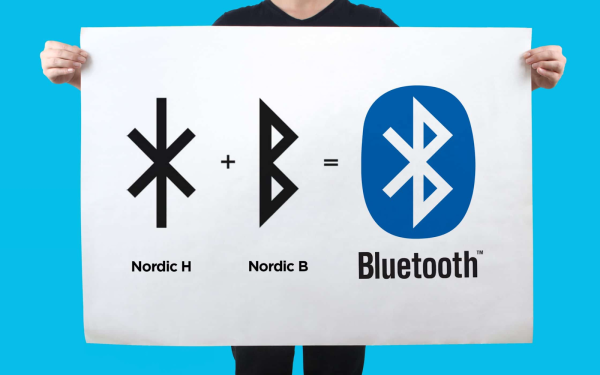Some things have become so normalized in our society today, that we, as humans, forget to be amazed. As President Ronald Reagan said in response to the Challenger disaster, “We’ve grown used to wonders in this century.” While there has not been a rocket explosion recently to remind us of our curiosity, we need to regain our wonder of the advancements around us. One of these advancements that most of us use on a daily basis is bluetooth. We have grown so accustomed to the use of it and what it provides us – a personal world of sound – that we have forgotten how cool it is!
We often forget to ask the most basic questions. Bluetooth is so common that no one asks how it works or what it even is. First of all, bluetooth is named after a 10th-century Danish king. Viking king Harald Bluetooth ruled Denmark from 958 to 986. He had a dead tooth, which was a dark blue or gray color, thus anointing him with the name “Bluetooth”. Other than his name, this viking king is most known for uniting the tribes of Denmark into a single kingdom. Bluetooth was also one of the first viking kings to convert to Christianity. In 1996, the leaders in the development of bluetooth planned to standardize a short-range radio technology to establish connectivity and collaboration between different products and industries. Jim Kardach, one of the pioneers in Bluetooth technology, suggested Bluetooth as a temporary name; he was quoted saying, “King Harald Bluetooth…was famous for uniting Scandinavia just as we intended to unite the PC and cellular industries with a short-range wireless link.” The Bluetooth Logo is even a nod to this great king, as it is a bind rune merging the Younger Futhark runes (Hagall) (ᚼ) and (Bjarkan) (ᛒ) which are Harald’s initials.
It connects our phones to our airpods, and our computers to speakers, and our ipads to televisions – but what is it? According to Samsung: bluetooth is “a wireless technology that uses a radio frequency to share data over a short distance, eliminating the need for wires.” Bluetooth works in connecting devices with other PANs, or personal area networks. A PAN “is a computer network for interconnecting electronic devices within an individual person’s workspace.” Seems like using airpods to do your homework is a lot.
This leads to the question which is arguably more interesting: how does bluetooth work? It uses ultra high frequency radio waves to share data between connected devices. In the most common mode, these waves are safely limited at 2.5 milliwatts which allows a range of up to 33 feet. Bluetooth is a master/slave complex – “one master may communicate with up to seven slaves in a piconet.” A piconet is a communication network established through bluetooth that links a wireless group of devices. This piconet uses a packet-based protocol called packet switching, which “is a method of grouping data into short messages in fixed format” called packets “that are transmitted over a digital network.” All devices involved in a piconet use a clock provided by the master as a foundation for packet exchange. The clock “ticks” and shares packets with the slaves using even slots and odd slots for transmission and acceptance. The Bluetooth Core Specification establishes the connection between many piconets to form a scatternet, in which devices can play both the master in one piconet and the slave in another. In all, bluetooth uses radio-wave pathways to share data in special relationships with intricate connections.
Through all of its complications, bluetooth is a wonder that is forgotten by the normalcy of modern day. Maybe bluetooth does not seem as revolutionary as a rocket, but President Ronald Reagan was right: “It’s hard to dazzle us.”



 .
. 

